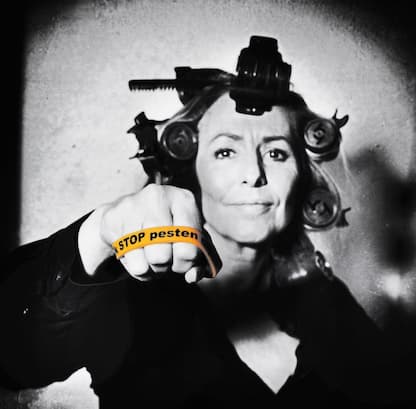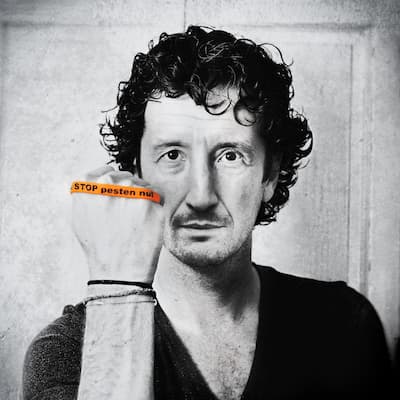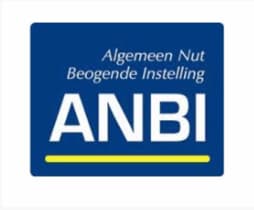Abstract
Bullying is known to be associated with social status, but it remains unclear how bullying involvement over time relates to social position (status and affection), especially in the first years at a new school. The aim of this study was to investigate whether (the development of) bullying and victimization was related to the attainment of status (perceived popularity) and affection (friendships, acceptance, rejection) in the first years of secondary education (six waves). Using longitudinal data spanning the first- and second year of secondary education of 824 adolescents (51.5% girls; Mage T1 = 12.54, SD = 0.45) in the SNARE-study, joint bullying and victimization trajectories were estimated using parallel Latent Class Growth Analysis (LCGA). The four trajectories (decreasing bully, stable high bully, decreasing victim, uninvolved) were related to adolescents’ social position using multigroup analysis that examined differences in slope and intercepts (T1 and T6) of social positions, and indicated that the relative social position of the different joint trajectories was determined at the start of secondary education and did not change over time, with one exception: adolescents continuing bullying were besides being popular also increasingly rejected over time. Although bullying is functional behavior that serves to optimize adolescents’ social position, anti-bullying interventions may account for the increasing lack of affection that may hinder bullies’ long-term social development.
Conclusion
At the start of secondary education, adolescents are eager to attain a strong social position in their new school class. A strategy to attain a strong social position is by bullying others. However, it remains unknown if bullies succeed in the end. Therefore, in this study, bullying and victimization trajectories were related to adolescents’ social status and affection, using longitudinal data spanning the first years of secondary education. Results indicated that bullies were able to attain both social status and affection. Uninvolved adolescents were able to attain affection, but less social status and victims attained neither status nor affection. Furthermore, the relative social position of the different joint trajectories was already determined at the start of secondary education and did not change over time. This has important implications for bullying prevention in secondary schools. Programs that aim to prevent bullying and to foster positive group formation in adolescence are likely to only be successful when they are implemented immediately at the start of secondary education. We also found that ado- lescents who did not only bully at the start of secondary education but also in the next years became, although popular, increasingly rejected. The increase of rejection may hinder bullies’ long-term social development. In that way, adolescents may benefit from interventions that link social status and affection to prosocial behavior.
Download report PDF Bullying and Victimization Trajectories in the First Years of Secondary Education: Implications for Status and Affection
Vertaling via Google translate (fouten voorbehouden)
Abstract
Het is bekend dat pesten verband houdt met sociale status, maar het blijft onduidelijk hoe de betrokkenheid van pesten in de loop van de tijd verband houdt met de sociale positie (status en genegenheid), vooral in de eerste jaren op een nieuwe school. Het doel van dit onderzoek was om te onderzoeken of (de ontwikkeling van) pesten en slachtofferschap verband hield met het bereiken van status (gepercipieerde populariteit) en genegenheid (vriendschappen, acceptatie, afwijzing) in de eerste jaren van het secundair onderwijs (zes golven). Aan de hand van longitudinale gegevens over het eerste en tweede jaar secundair onderwijs van 824 adolescenten (51,5% meisjes; Mage T1 = 12,54, SD = 0,45) in de SNARE-studie, werden gezamenlijke pesten en slachtofferschapstrajecten geschat met behulp van parallelle Latent Class Growth Analysis ( LCGA). De vier trajecten (afnemende pestkop, stabiele hoge pestkop, afnemend slachtoffer, niet-betrokken) waren gerelateerd aan de sociale positie van adolescenten met behulp van multigroup-analyse die verschillen in helling en onderscheppingen (T1 en T6) van sociale posities onderzocht, en gaf aan dat de relatieve sociale positie van de verschillende gezamenlijke trajecten werden bepaald aan het begin van het secundair onderwijs en veranderden niet in de tijd, met één uitzondering: pubers die doorgingen met pesten werden behalve populair ook steeds meer afgewezen in de tijd. Hoewel pesten functioneel gedrag is dat dient om de sociale positie van adolescenten te optimaliseren, kunnen antipestinterventies de oorzaak zijn van het toenemende gebrek aan genegenheid dat de sociale ontwikkeling van pesters op de lange termijn kan belemmeren.
Conclusie
Aan het begin van het voortgezet onderwijs willen jongeren graag een sterke sociale positie verwerven in hun nieuwe schoolklas. Een strategie om een sterke sociale positie te verwerven is door anderen te pesten. Het blijft echter onbekend of pestkoppen uiteindelijk slagen. Daarom werden in deze studie pesten en slachtofferschapstrajecten gerelateerd aan de sociale status en affectie van adolescenten, waarbij gebruik werd gemaakt van longitudinale gegevens over de eerste jaren van het secundair onderwijs. De resultaten gaven aan dat pestkoppen in staat waren zowel sociale status als genegenheid te verwerven. Niet-betrokken adolescenten konden genegenheid verwerven, maar minder sociale status en slachtoffers bereikten status noch genegenheid. Bovendien werd de relatieve maatschappelijke positie van de verschillende gezamenlijke trajecten al bepaald bij de start van het secundair onderwijs en veranderde niet in de tijd. Dit heeft belangrijke gevolgen voor de preventie van pesten op middelbare scholen. Programma's die gericht zijn op het voorkomen van pesten en het bevorderen van positieve groepsvorming in de adolescentie, hebben waarschijnlijk alleen succes als ze direct bij de start van het secundair onderwijs worden geïmplementeerd. We ontdekten ook dat adolescenten die niet alleen aan het begin van het secundair onderwijs pestten, maar ook in de jaren daarna, hoewel populair, in toenemende mate werden afgewezen. De toename van afwijzing kan de sociale ontwikkeling van pestkoppen op de lange termijn belemmeren. Op die manier kunnen adolescenten profiteren van interventies die sociale status en affectie koppelen aan prosociaal gedrag.
Tip van de redactie
Heb je haast? Navigeer dan snel naar:
► Scholen & Professionals Kenniscentrum Pesten in het Onderwijs
- Of navigeer direct naar de informatie per functionaris: Schooldirectie & MT / Anti-pest coördinator / Leerkracht / Mentor / Ouderraad & MR
- Leerlingen & opvoeders: Kinderen & Jongeren (Leerlingen) / Ouders & Opvoeders
► Sportverenigingen Kenniscentrum Pesten in de Sport
- Of navigeer direct naar de informatie per functionaris: Bestuurders / Coaches, Trainers & Begeleiders / (Top)Sporters & Scheidsrechters
- Jonge leden & ouders Kinderen & Jongeren (Leerlingen) / Ouders & Opvoeders
► Werkgevers Kenniscentrum Pesten op het Werk
- Of navigeer direct naar de informatie per functionaris: Directie en bestuurders / HRM / MT en Leidinggevenden / Medewerkers / Ondernemersraden / Vertrouwenspersonen
► Ouderen Kenniscentrum Pesten in Woonzorgcentra

Breng snel een bezoekje aan ...
► Kenniscentrum (Klassiek) Pesten
► Kenniscentrum Online pesten (cyberpesten)
► Kennisbank & Downloadcentrum o.a. Beleid & Factsheets / Handleidingen / Lesmaterialen / Posters / Wetenschappelijke Onderzoeken
► Ik word gepest, wat kan ik doen
Stichting Stop Pesten Nu is het enige Erkende Goede Doel tegen Pesten in Nederland!







